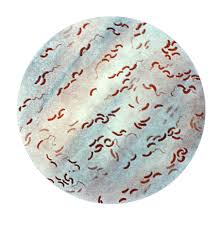J. W. Waffensmith, M.D.
October 31, 1931. A boy, age three years, showed the following symptoms: Restlessness, intense; goes from one thing to another; uncontrollable; noisy; boisterous; does not talk plainly; inattention; teases other children; runs away from home; plays in water; keeps repeating whatever he wants to say; fearless; sits in middle of street; obstinate. There is a history of the mother visiting and being much affected by restlessness of a dying relative during pregnancy. Narrow head irregular elevations of skull, especially over both ears; face long and narrow. When a baby was sleepless before midnight; awakens early; hungry when awakens. Eating of soil; desires sweets, meat, milk. Abdomen enlarged. Kicks off the covers. Masturbation. Urinates often Sulphur 200, B. and T.
December 12, 1931. Has had cold and grows no better. Cough, hard, aggravated in the daytime. Fever, worse at night. Sleepless, but sleepy, aggravated 2-5 a. m. Fear. Rattling in chest. Ant. Tart. 3, B. and T.
There was a severe aggravation the first three weeks after the Sulphur, then improvement began. He talks better, does not care to run away and expose himself to danger. The parents are agreeably surprised with improvement, which affects all the symptoms.
The record we are studying shows no evidence of an eliminative process, no history of an eruption or activity in excretion. In full force the constitutional impact has been expended upon the nervous system in the major symptom of nerve irritability.
The symptom picture, treatment and the curative progress of the child will show it was of a typical psoric nature.
We cannot escape the futility of forming a judgment except upon the individual basis, which in each case opens a new world of biological and psychological investigation. The philosophy of homoeopathy answers the question for all time.
The general physical condition was good. All through the symptom picture an intense restlessness was portrayed. It was the outstanding characteristic which shaped the reaction to environmental conditions the projection appeared in a state of noisiness, the tendency to run away, and a fearlessness which aroused comment from playmates and no end of anxiety from the parents.
Obstinacy adds cohesion to the deep-seated impress of the miasm in the various contributory symptoms, and crystallizes the nerve irritability of psoric neuroses.
On December 12th, a severe and persistent cold tends to involve the bronchioles, with rattling in chest. The element of fear appears for the first time. The new symptom complex directs our attention to sycosis. It was a latent and minor factor in the case grouping and brought our by the recession of the more active, opening the way for recognition and treatment. Although a serious expression it is the evidence of the evolution of a conservative curative process.





